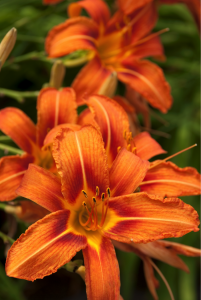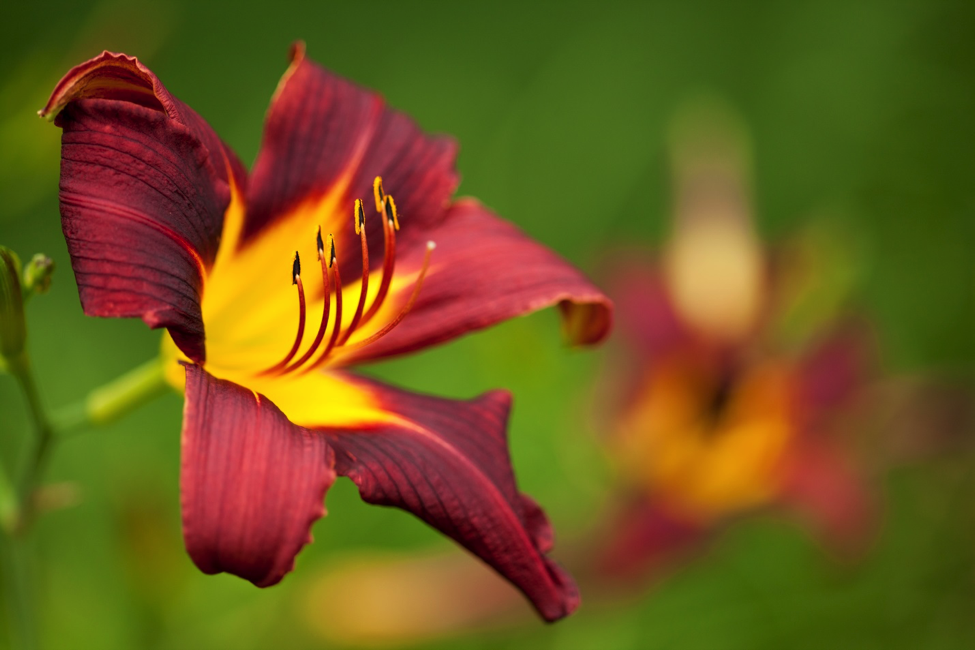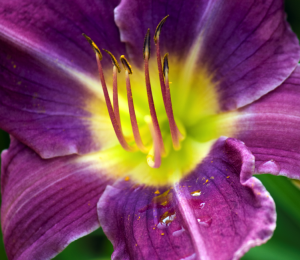A Walk Among the Daylilies
Posted in Horticulture on July 6 2015, by Rachel Rock-Blake
Rachel Rock-Blake is the Assistant Curator of Outdoor Collections at NYBG.

Among our many extensive botanical collections in the Garden, the daylilies have a story that is very close to the heart of The New York Botanical Garden. Considered the “father of the modern daylily,” Dr. Arlow Burdette Stout (1876–1957) spent a majority of his career as a scientist at NYBG. The daylilies that bloom along Daylily/Daffodil Walk this time of year include Hemerocallis species, Stout’s own hybrids, and selections of the tens of thousands of named cultivars that Stout’s work has inspired.
A mainstay in American home gardens and a common sight along our roadways in the summer, daylilies are actually not native to the Americas but rather introductions from Asia via Europe. As European settlers moved ever westward across North America, they brought daylilies with them as reminders of home. Stout grew up in the midwest, and as a child became interested in the bright orange flowers that his mother grew in their yard. Prior to his breeding program, very little work had gone into improving and diversifying cultivated daylilies. Stout saw potential in these plants, and a stroll along Daylily/Daffodil Walk in July is a testament to his vision.
A brief education in cultivated daylily diversity should begin in bed 9, which runs parallel to Garden Way. Starting on the left, you will first see the Hemerocallis species and natural varieties from which all of the modern cultivars were bred. This includes the tawny daylily, H. fulva, which is the common rust-orange daylily. The rest of the bed is devoted exclusively to Stout’s own hybrids and selections, in which you can see the many directions in which he pushed the gene pool. Do not miss ‘Theron’, a deep red cultivar bred in 1934. Stout was especially proud of this one because it was the first introduction of a truly red flower.

Across from bed 9, arranged in chronological order, are the Stout Silver Medal winners in bed 10. This award was established in honor of Stout in 1950, and is the highest award given annually by the American Hemerocallis Society. In this bed you will see some of the most important advances in Hemerocallis breeding.

From here you can make your way up Daylily/Daffodil Walk to see a remarkable diversity of modern cultivars arranged in waves of color. Cultivars such as ‘Prairie Blue Eyes’ demonstrate just how far daylily breeding has evolved in the last century. Bright purple merges to blue down each ruffled petal, ending in a defined lime green center. It is a far cry from H. fulva and its ilk. Many new cultivars also have an extended blooming period, which would entice any home gardener to try a few.
Who knows? You too may be inspired to try your hand at daylily breeding and join the ranks of the thousands of devoted fans who try to see where the daylily can go next.

